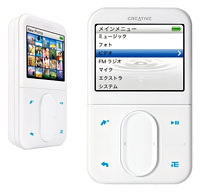 Creative Zen Vision:M
Creative Zen Vision:M
Although looking like a near-exact copy of the video iPod, the 30 gig Zen Vision is a fine player in its own right, sporting persuasive features not found on its rival.
Sharing near-identical physical dimensions as the iPod, the Zen manages to add a composite video out connector for playing video content on TVs, an integrated FM radio with 32 presets, voice recording, alarm clock, groovy customisable themes and the ability to synchronise Microsoft Outlook data, such as contacts, calendar and tasks.
 The player’s a versatile chap too, with the Vision:M outgunning the iPod by supporting a wider range of formats, like MP3, WMA and PlaysForSure audio formats and MPEG1/2/4, DivX and XviD, Motion JPEG and WMV for video.
The player’s a versatile chap too, with the Vision:M outgunning the iPod by supporting a wider range of formats, like MP3, WMA and PlaysForSure audio formats and MPEG1/2/4, DivX and XviD, Motion JPEG and WMV for video.
Battery life is claimed at four hours in video-playback mode (twice as long as the iPod) and fourteen hours for audio.
Expected on the streets now, the Creative Zen Vision:M will sell for around $350 (~£197, ~€291).
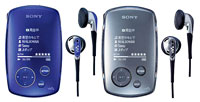 Sony NW-A1000
Sony NW-A1000
It’s taken Sony a long time to come up with a serious challenge to iPod’s dominance, but the new NW-A1000 could be the one to unseat the Nano.
Resplendent in an unusual organic form factor, the player sports a translucent acrylic clad exterior that reveals a large, bright display lurking below. It looks fantastic, and it’s refreshing to see a radical new design coming through in a market dominated by iPod-alikes.
 The palm sized player (88 x 55 x 19 mm) comes with a built in 6GB hard drive and supports MP3 files as well as Sony’s ATRAC3 and ATRAC3+ audio formats. Battery life is claimed at 20 hours (although several reviews have found that figure to be wildly optimistic).
The palm sized player (88 x 55 x 19 mm) comes with a built in 6GB hard drive and supports MP3 files as well as Sony’s ATRAC3 and ATRAC3+ audio formats. Battery life is claimed at 20 hours (although several reviews have found that figure to be wildly optimistic).
Thankfully, Sony have finally ditched the awful Sonic Stage software needed to transfer files over the USB 2.0 connection, but the new Connect Player software still has some way to go to match the simplicity and ease of use of iTunes.
The player’s already available in Europe and North America, priced around €250 and $250.
 Apple iPod Nano
Apple iPod Nano
Introduced in September, Apple’s fabulously designed iPod Nano has already proved an enormous hit, with its teensy-weensy dimensions and stunning looks crushing every flash-based player in sight.
Sure, it’s not perfect – there’s no video support and the thing scratches easier than a Shakin’ Stevens 45 – but it features Apple’s superb Click Wheel user interface and offers a crisp 1.5″ colour screen for viewing photos.
Coming in 2GB and 4GB flavours, the diminutive player (3.3 x 0.98 x 0.33 inches) supports MP3, AAC and Audible 2, 3 and 4 formats and is compatible with the iTunes online store.
Microsoft Outlook calendar and contacts info can be synchronised via iTunes 5, and with the player sporting the same 30-pin dock connector as the iPod and iPod mini, there should be no shortage of accessories.
There’s a nippy USB 2.0 port onboard and battery life is claimed at a healthy 14 hours.
Starting at €200 (~$240 ~£135), the Nano is available in just black or white for now.
 Cambridge outfit, HD Positions, have launched their ‘Boomerang Box’ device, a new low cost, high accuracy positioning system which locates vehicles and other valuable assets.
Cambridge outfit, HD Positions, have launched their ‘Boomerang Box’ device, a new low cost, high accuracy positioning system which locates vehicles and other valuable assets. The service works by HD Positions supplying the interface to Matrix, facilitating related Machine to Machine (M2M) services, including network connectivity, billing and support.
The service works by HD Positions supplying the interface to Matrix, facilitating related Machine to Machine (M2M) services, including network connectivity, billing and support. We tried to find a picture of the actual Boomerang Box, hopeful that it would be an amusing looking thing that would spice up this rather dull report, but there was nothing to be found on their Website.
We tried to find a picture of the actual Boomerang Box, hopeful that it would be an amusing looking thing that would spice up this rather dull report, but there was nothing to be found on their Website.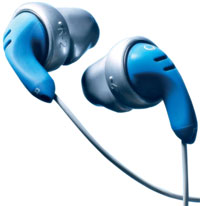 In-ear headphones (“earbuds”) like those sold with the iPod and other music players can increase the risk of hearing loss, according to a US audiologist (a what?!)
In-ear headphones (“earbuds”) like those sold with the iPod and other music players can increase the risk of hearing loss, according to a US audiologist (a what?!) We can certainly verify that some folks seem oblivious to the risk, blasting their music so high that we can hear the annoying “tssk chk tssk chk” leaking from in-ear phones over the thunderous rattle of a tube train.
We can certainly verify that some folks seem oblivious to the risk, blasting their music so high that we can hear the annoying “tssk chk tssk chk” leaking from in-ear phones over the thunderous rattle of a tube train. Garstecki proposes the 60%/60 minute rule as a solution – this involves listening to an MP3 device for no longer than about an hour a day and at levels below 60% of maximum volume.
Garstecki proposes the 60%/60 minute rule as a solution – this involves listening to an MP3 device for no longer than about an hour a day and at levels below 60% of maximum volume. The BBC is hoping to get Dr Who fans reaching for their red buttons en masse with a video-rich interactive TV application scheduled to run straight after the airing of the Christmas Day special (7:00PM GMT).
The BBC is hoping to get Dr Who fans reaching for their red buttons en masse with a video-rich interactive TV application scheduled to run straight after the airing of the Christmas Day special (7:00PM GMT). It looks that the BBC has invested muchos cash into the venture, employing live-action video and “state-of-the-art” special effects produced at the high end visual effects studio, The Mill.
It looks that the BBC has invested muchos cash into the venture, employing live-action video and “state-of-the-art” special effects produced at the high end visual effects studio, The Mill. Produced in Cardiff by BBC New Media and BBC Wales, producer Sophie Fante commented, “Attack of the Graske gives the viewer the unique opportunity to immerse themselves fully in the world of Doctor Who.”
Produced in Cardiff by BBC New Media and BBC Wales, producer Sophie Fante commented, “Attack of the Graske gives the viewer the unique opportunity to immerse themselves fully in the world of Doctor Who.” We can’t wait to watch this latest installment of the highly rated Dr Who series and are hoping to witness another kind of winter wonderland the day after when the mighty Cardiff City FC take on Plymouth.
We can’t wait to watch this latest installment of the highly rated Dr Who series and are hoping to witness another kind of winter wonderland the day after when the mighty Cardiff City FC take on Plymouth.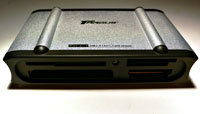 As your collection of digital devices grows, you’ll probably find it near-impossible to stick with just the one memory card format as the pesky things keep on changing.
As your collection of digital devices grows, you’ll probably find it near-impossible to stick with just the one memory card format as the pesky things keep on changing.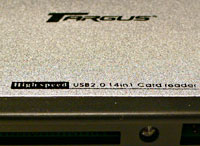 Getting data off these various cards usually means a trip to the back of the PC to install the various cables that came with all your camera/smartphone etc (when will they standardise all the ruddy USB connecters?!).
Getting data off these various cards usually means a trip to the back of the PC to install the various cables that came with all your camera/smartphone etc (when will they standardise all the ruddy USB connecters?!).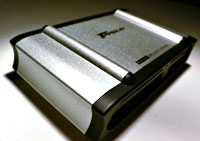 With most memory card readers offering support for a huge variety of memory cards, all you need to take on the road is a single USB lead to connect the card reader to your laptop and you’re sorted!
With most memory card readers offering support for a huge variety of memory cards, all you need to take on the road is a single USB lead to connect the card reader to your laptop and you’re sorted!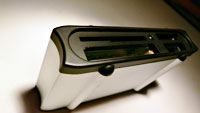 We were sadly guilty of leaving the charger for our Nikon N70 back in Blighty during out recent jaunt to NYC, and after seeing the battery levels accelerating downwards as we transferred zillions of images to our laptop, we shelled out for a cheap’n’cheerful Targus card reader, the TG-CRD14 ($25 street price).
We were sadly guilty of leaving the charger for our Nikon N70 back in Blighty during out recent jaunt to NYC, and after seeing the battery levels accelerating downwards as we transferred zillions of images to our laptop, we shelled out for a cheap’n’cheerful Targus card reader, the TG-CRD14 ($25 street price).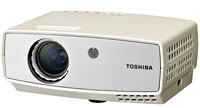 It wasn’t that long ago that lugging around a projector was the first step on the painful route to a guaranteed hernia, but thanks to the wizardry of boffins and the onward march of technology, projectors are no longer the size of small houses.
It wasn’t that long ago that lugging around a projector was the first step on the painful route to a guaranteed hernia, but thanks to the wizardry of boffins and the onward march of technology, projectors are no longer the size of small houses.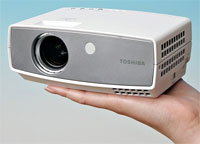 The TDP-FF1A (try saying that with a mouthful of tea) also comes with a handy USB port to let photographers directly display their photos straight off the camera.
The TDP-FF1A (try saying that with a mouthful of tea) also comes with a handy USB port to let photographers directly display their photos straight off the camera. Also shown off at the September IFA 2005 in Berlin was Samsung’s neat Pocket Imager SP-P300M projector.
Also shown off at the September IFA 2005 in Berlin was Samsung’s neat Pocket Imager SP-P300M projector. The attractive LED projector sports a contrast ratio is 1000:1 with an impressively high claimed bulb life of 10,000 hours.
The attractive LED projector sports a contrast ratio is 1000:1 with an impressively high claimed bulb life of 10,000 hours.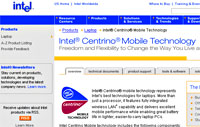 Intel has been bigging up its next-generation laptop technology, claiming they will use 25 percent less power while retaining class-leading performance.
Intel has been bigging up its next-generation laptop technology, claiming they will use 25 percent less power while retaining class-leading performance. According to Intel’s marketing chief for mobile platforms, Keith Kressin, this process means that the Napa system (which includes the Yonah processor, its attendant chipset and a new wireless chip) will soak up 28 percent less power than its predecessor while managing to perform 68 percent better
According to Intel’s marketing chief for mobile platforms, Keith Kressin, this process means that the Napa system (which includes the Yonah processor, its attendant chipset and a new wireless chip) will soak up 28 percent less power than its predecessor while managing to perform 68 percent better The tough challenge for Intel’s engineers is shoehorning ever more powerful processors into ever-slimmer laptops while improving battery life and managing to dissipate the processor’s heat.
The tough challenge for Intel’s engineers is shoehorning ever more powerful processors into ever-slimmer laptops while improving battery life and managing to dissipate the processor’s heat.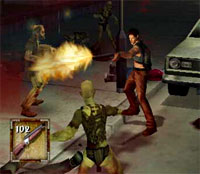 The New Scientist is reporting that US researchers have discovered a brain mechanism that may link violent computer games with aggression.
The New Scientist is reporting that US researchers have discovered a brain mechanism that may link violent computer games with aggression. Bartholow argues that this reduction in response is correlated with aggressive behaviour.
Bartholow argues that this reduction in response is correlated with aggressive behaviour. The team shipped in a crew of 39 gamers, and quizzed them on the amount of violent games they played, before being shown a series of neutral images interspersed with occasional violent or negative (but non-violent) scenes, while sensors recorded their EEGs.
The team shipped in a crew of 39 gamers, and quizzed them on the amount of violent games they played, before being shown a series of neutral images interspersed with occasional violent or negative (but non-violent) scenes, while sensors recorded their EEGs. Throughout the tests, the violent games experience and P300 response were still strongly correlated with aggressiveness.
Throughout the tests, the violent games experience and P300 response were still strongly correlated with aggressiveness. Freeman also added that stopping people playing violent video games would be like banning them from playing sports such as football or hockey.
Freeman also added that stopping people playing violent video games would be like banning them from playing sports such as football or hockey. With a fearful eye on Skype’s runaway success, Microsoft has joined the stampede to offer Internet-based telephony services by announcing a cut price, pre-paid PC-to-phone service, the result of a deal with the US telecommunications group, MCI.
With a fearful eye on Skype’s runaway success, Microsoft has joined the stampede to offer Internet-based telephony services by announcing a cut price, pre-paid PC-to-phone service, the result of a deal with the US telecommunications group, MCI.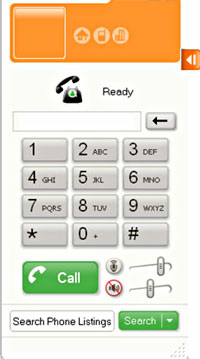 In recent months, Google, Yahoo! and eBay’s Skype unit have all chipped in with their own cheapo PC-to-phone VoIP (Voice over Internet Protocol) services.
In recent months, Google, Yahoo! and eBay’s Skype unit have all chipped in with their own cheapo PC-to-phone VoIP (Voice over Internet Protocol) services.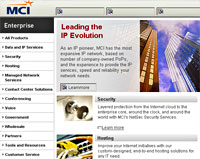 Similarly, Skype, the current big boys of the PC-to-PC VoIP market, are offering calls for about 2 cents a minute from a PC to a phone in the US other countries.
Similarly, Skype, the current big boys of the PC-to-PC VoIP market, are offering calls for about 2 cents a minute from a PC to a phone in the US other countries.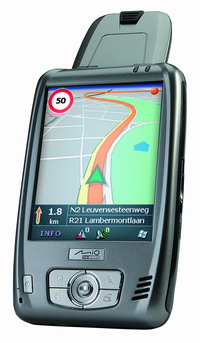 Out just in time for overgrown boys to stick it on their Santa wish list, Mio Technology have announced their new Mio A201 integrated GPS model.
Out just in time for overgrown boys to stick it on their Santa wish list, Mio Technology have announced their new Mio A201 integrated GPS model.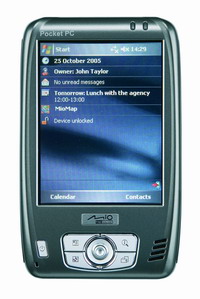 Mio are promoting the device as a ‘go anywhere’ portable sat-nav device which can be used for drivers, mountain bikes or walkers ambling through the countryside.
Mio are promoting the device as a ‘go anywhere’ portable sat-nav device which can be used for drivers, mountain bikes or walkers ambling through the countryside.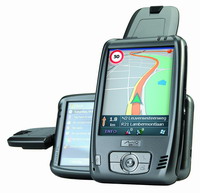 There’s the usual Outlook synchronisation options available, and we rather liked the new Compass Mode designed for navigating off road on foot or on a bicycle.
There’s the usual Outlook synchronisation options available, and we rather liked the new Compass Mode designed for navigating off road on foot or on a bicycle.